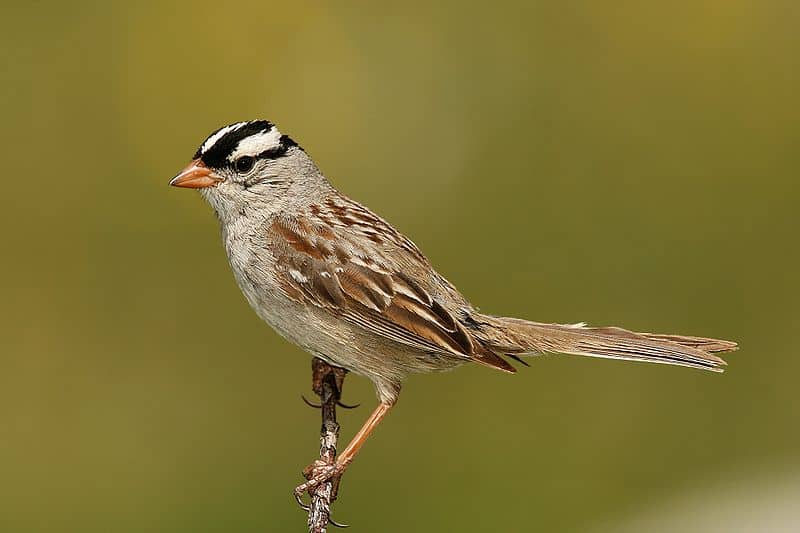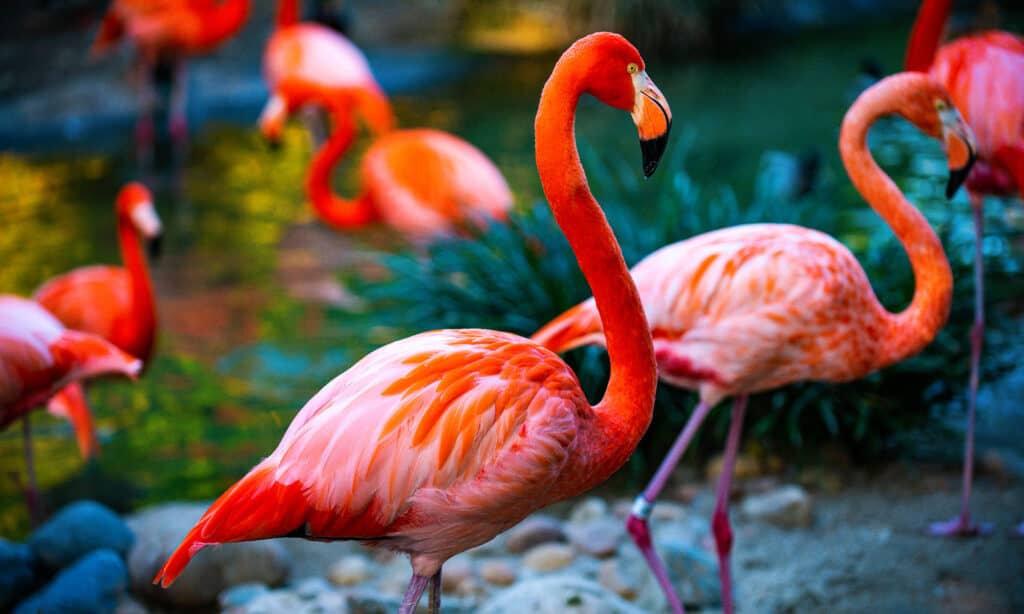The international pandemic that began a few years ago had long-lasting impacts on more things than we fully know. Work-life has changed, greenhouse emissions reports showed drastic reductions, and our public awareness of health will never be the same. At the same time, all of these human-centric things happened, however, the animal kingdom was experiencing some changes of its own! Humans and our activities have more of an impact on wildlife than we realize sometimes, and one story shows just that. In fact, the pandemic caused one group of birds to sing a tune that hadn’t been heard since 1954. Here’s how.
In San Fransisco, lockdowns were some of the toughest, resulting in some drastic changes to the natural ecosystem.

Birds in San Fransisco began singing
a strange new song during the pandemic.
©Wolfgang Wander / Creative Commons – Original
In early 2020, San Francisco went into the now-famous lockdowns for the first time. As one of the largest cities in North America, the sudden change from busy streets to silence was quite apparent. In fact, the outdoor noise level dropped so low that it was measuring consistent with historical levels from 1954. Amid the quiet, birds began to sing, only it was a little different this time around.
The first changes were noticed in a species of bird known as the white-crowned sparrow. Who was listening to these birds close enough to know? Well, that woman is Elizabeth Derryberry, a researcher who had been listening to their song for over two years. When the 2020 lockdowns first hit, she was the first to notice the changing song of the white-crowned sparrow.
“They stopped singing loudly, yet you could hear them at greater distances because it was so much quieter,”
Atlas Obscrura
Outside of just singing quietly, the birds started expanding their vocal range.

Once noise levels dropped, these birds began singing better since they didn’t have to “shout” over the cars.
©Glenn Price/Shutterstock.com
When it comes to acoustics, higher-pitched noises usually carry further in sound-congested environments. In the case of the white-crowned sparrow, using higher frequencies during their song had become a necessity in order to stand out over traffic and street noise.
As it turns out, however, these birds have a much broader range that they prefer to operate in, they just couldn’t compete with the loud cars. With those cars gone, they began singing those old tunes that they used to before the cars became too overwhelming. To use technical language, the acoustic range that the birds were singing in was drastically expanded. Additionally, birds with quieter voices started making their song heard again. Derryberry’s reports show that there were nearly four times as many birds that were audible when compared to how things used to be.
The effect is known as the Lombard effect. Essentially, the birds had sacrificed vocal quality for volume, something that humans can understand pretty well. When someone is able to talk in a lower tone, they are able to be more vocally clear and rich. The same thing is true for birds! The song wasn’t just quieter, but the birds were able to be a little more creative and sing in prettier ways.
What is going to happen as the noise returns to normal?
As it stands, the birds around San Fransisco still seem to be singing in their pandemic-era voices, which is a good thing! It’s possible that the pandemic caused a change in the birds that won’t be lost easily, but nothing is certain. As one scientist explains, birds are pretty “vocally elastic” and may change their behavior all of a sudden one day.
“The birds have the same old types of songs they always had but individual birds altered them in response to noise,” he explains. “That really suggests there was no kind of permanent change that couldn’t quickly be undone.”
Atlas Obscura
Derryberry, however, thinks that things are simply unknowable. In her mind, the long-term impact of the pandemic is unprecedented, and making any sort of long-term assumption would be silly.
“I don’t have a clear answer here, but the preliminary data suggests they haven’t switched back [to their pre-pandemic songs], and we don’t know why,” she says. “We don’t know if that’s a good thing or a bad thing. We’re waiting to see what their songs do.”
Atlas Obscura
Whatever the case, it’s amazing to see nature bounce back!

All over the world, animals came out in record numbers as humans went inside.
©Volodymyr TVERDOKHLIB/Shutterstock.com
Birds weren’t the only animals to make some pretty substantial changes during the pandemic. As soon as humans locked themselves away for most of the day, immediate changes were seen. In Aigues-Mortes in the Camargue region of France, for example, there were more flamingos sighted than had ever been seen since record-keeping began. Off the coast of Istanbul, dolphins were visible and swimming since boat traffic had dropped off a cliff. Essentially, wildlife began reclaiming what was their’s a long time ago.
Up Next
- Song Sparrow
- Finch vs Sparrow: Key Differences Explained
- 10 Birds That Sing: The Most Beautiful Bird Songs in the World
The photo featured at the top of this post is © Wolfgang Wander / Creative Commons / Original
Thank you for reading! Have some feedback for us? Contact the AZ Animals editorial team.







